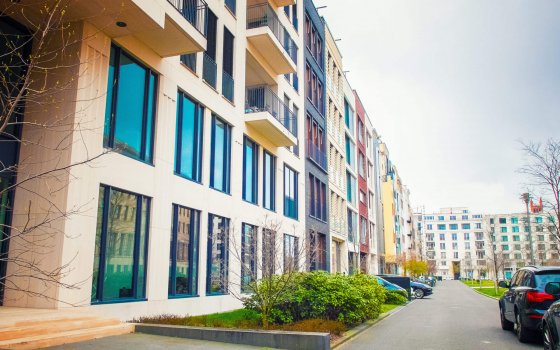- May 3, 2022
- CINC Systems

Imagine this: You’re gearing up for your upcoming HOA board election, hoping to engage your community and improve the relationship your board has with fellow homeowners. But as you work to collect votes, you can’t achieve quorum. It’s not because of your lack of trying, either. The homeowners you’ve spoken to were certainly engaged and voted. But there were a ton of homeowners that you couldn’t speak to – because they don’t actually live there.
One of the biggest surprises that we had when reviewing our 2022 State of the Industry Report was the level of concern pertaining to short term rentals and investment homes. The concern was higher among boards than community association management executives, which could mean that the problem may be growing in intensity just now. This isn’t a problem that’s going to go away, either: the average number of unique listings on popular short term rental sites is expected to increase by 20.5% in 2022, and investors purchased a record of one in five homes last year.
We can’t change trends in the way consumers wish to vacation or the types of investments others wish to make, especially in a healthy housing market. But the primary goal of a homeowners association is to build community, and this isn’t possible if there are is no community to build. So how can we protect the very mission of our HOAs and COAs without assuming that we can stop an ever-growing trend?
Are investment homeowners invested in your community?
An investment property can be best described as real estate purchased to generate income through either rental income or appreciation. Oftentimes they are purchased by a single investor looking to improve the value of their cash offering; sometimes these purchases will be from investors who don’t even live in the United States, but want to increase the value of their cash equivalent.
Real estate is absolutely an investment, and it’s a smart investment for many. But what happens when a community is fraught with homeowners who never truly live there? Many HOAs are noting that the upkeep of the home isn’t as carefully mannered as others, which in turn brings down the value of the whole neighborhood. Other frustrations relate to homeowner apathy – a huge concern across the community association management industry. Investment homeowners are significantly less likely to vote for board members, participate in neighborhood polls, or communicate and interact with other neighbors. And while there are prospective homeowners ready and able to be active members of a community, their offers often can’t compare with those of investors who are able to pay in full cash.
Short term rentals leading to a surge in violations
As vacationers enjoy the experience of the Airbnbs and VRBOs of the world, many homeowners are recognizing the extra income they can enjoy by renting out their units, especially in destination locations. While this is a natural change in travel over the past decade that isn’t likely to wane in popularity, many associations are left perplexed on what they should and shouldn’t allow.
The main concern that most HOAs and COAs have pertaining to short term rentals is that they have less control over the renters’ actions. Excessive noise, parking violations, and disregard for rules such as trash pickup time are just a few concerns cited from residencies that are regularly rented.
One of the most common misconceptions of a homeowners association – and the reason why many believe that they don’t want to live in an HOA – is that all an association does is issue one violation after another. As boards work to debunk this myth through community-building activities, they may be dismayed if they also have to increase the number of violations added to their roster. And this also, of course, hurts the workload of the community manager, who is already in burnout mode.
Should you actively stop rentals and investment homes, or would that only make things worse?
There are rules and regulations that can be put into place within an HOA and COA that can limit, or even eliminate, the allowance of investment and rentals within the community. But while this may alleviate the added stresses for the board and association management company, it may not be the right solution. Some housing analysts are concerned that blocking investors would harm renters in the long run, who may face a crisis in attempting to find affordable housing. Others are concerned with the level of power that HOA and COA boards are attempting to impose on the community – after all, why should the board have the right to determine whether or not you can earn extra income by renting out a residency that you own?
So, what can be done?
Every association is different, and there is no way to create a uniform procedure for all HOAs and COAs when it comes to investment homes and short term rentals. At the end of the day, it’s important for the board and association management company to determine what works best to build community and improve homeowner apathy. Here are a few things that can be done:
- Add to your CCR that homeowners must live in their home for a certain period of time within a give year – six months is a popular timeframe. This will curtail investors who plan to leave the home completely empty, but allow for flexibility for more engaged investment homeowners.
- Restrict vacation rentals to a certain number per homeowner per year. This will allow for short term rentals without having short term rentals encompass the vast majority of the community.
- Require homeowners to notify the board of each rental. This will ensure that the board can monitor any issues with violations from renters, and it can give them the ability to further review violations management with the owner. Such a measure would also force homeowners to be more mindful of the types of renters they approve – they may choose, for instance, to decline a potential renter with a low rating on a short term rental website.
- Keep homeowners abreast of the rules and regulations that are determined by the board through your digital communications. Upfront, transparent communication is key when working with homeowners wishing to tap into more investment opportunity.
- Finally, focus on what you can control the most: homeowner apathy. Community-driven events, digital polling and survey features, and maintenance updates to communal areas are all ways to drive engagement for everyone – even for a homeowner who may not live there all the time.
Related Reads

Blog
Keeping Calm and Carrying On: Leadership Tips for Turbulent Times
- November 20, 2024

Blog
AI at Bat: What Umpires, Baseball, and Data Security Can Teach Us About AI Risks
- October 28, 2024

Blog
Do I really need a homeowner app when I have a mobile-friendly website?
- October 14, 2024

Blog
Weathering the Storm: How to Adapt to Soaring HOA Insurance Costs
- October 1, 2024

Blog
How Today’s Generative AI Investment Drives Long-Term CAM Success: A Timeline
- September 16, 2024

Blog
A Common Sense Approach to Simplifying Budget Planning Get ready to conquer HOA budget season with this effective strategy
- September 2, 2024
